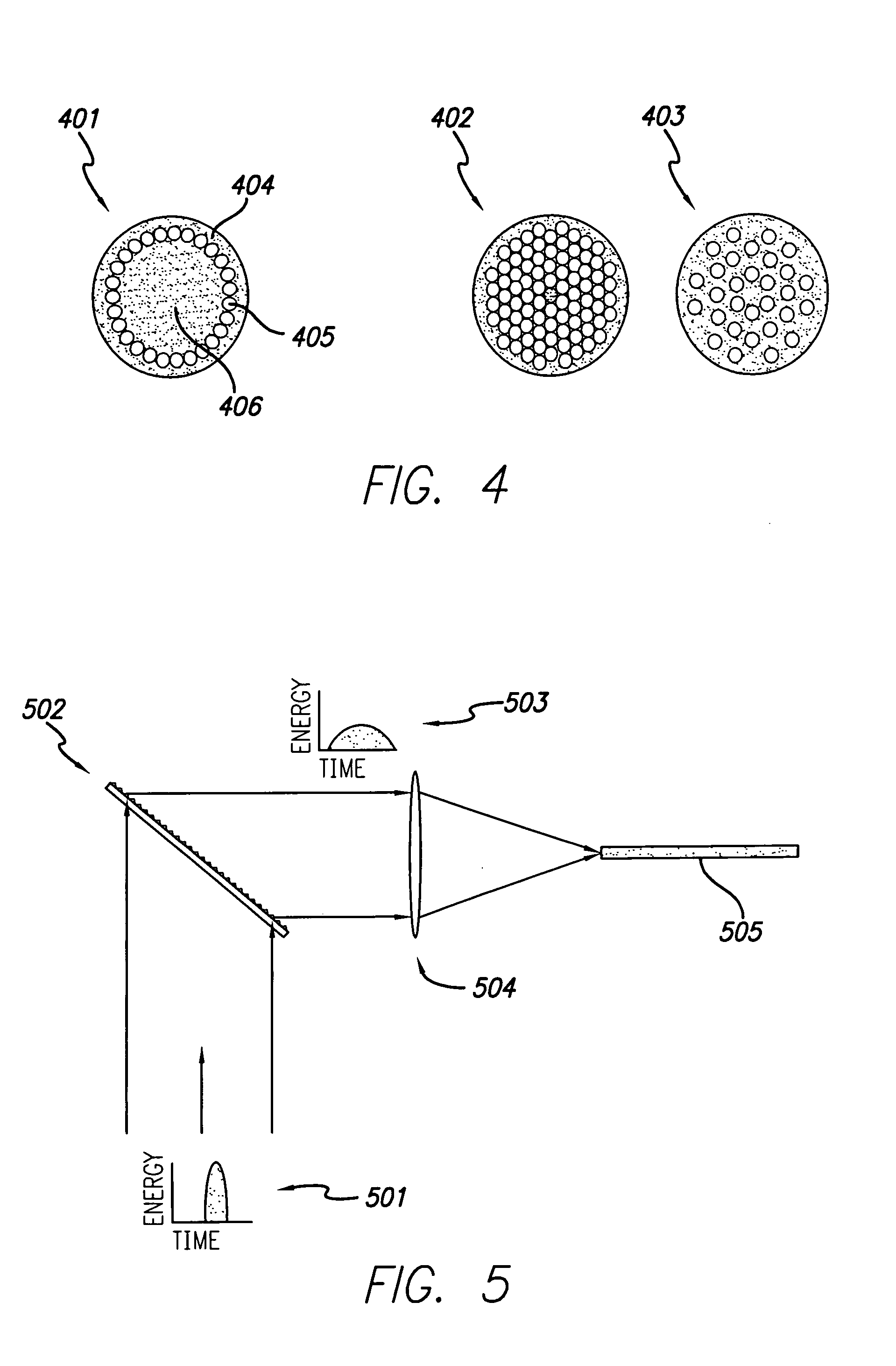Non-critical phase matching in CLBO to generate sub-213nm wavelengths
a non-critical phase matching and wavelength generation technology, applied in the field of illumination, can solve the problems of inefficient frequency conversion, large size of conventional lasers generating duv light energy, and difficult generating light at wavelengths below 213 nm, and especially below 200 nm
- Summary
- Abstract
- Description
- Claims
- Application Information
AI Technical Summary
Benefits of technology
Problems solved by technology
Method used
Image
Examples
first embodiment
[0156]this aspect of the design is based on a fundamental laser source at a wavelength of 998.444 nm. This laser is then frequency converted to the 2nd harmonic and then subsequently to the 4th harmonic. The 4th harmonic is then mixed in CLBO using non critical phase matching to obtain a wavelength of 199.7 nm. The fundamental laser can be frequency doubled to 499.222 nm using standard frequency conversion crystals such as LBO, newly developed crystals such as BiBO (Bismuth Triborate), or periodically polled materials. The frequency conversion method yields best results when efficiency is high while generally maintaining a good beam profile. Use of two frequency conversion crystals in series to compensate for walkoff and thermal walkoff effects can greatly improve efficiency.
[0157]In operation, the 4th harmonic at 249.611 can then be produced from the 2nd using another doubling stage. Production of the 4th harmonic can employ CLBO or BBO for this stage. The final process mixes the f...
second embodiment
[0162]The second embodiment is based on a fundamental laser source at a wavelength of 1064 nm that is Raman shifted to 1193.33 nm. The Raman shifted wavelength of the laser is then frequency doubled to the 2nd harmonic frequency or 2nd harmonic frequency laser energy level and then subsequently to the 4th harmonic frequency. The 4th harmonic may then be mixed in CLBO using non critical phase matching to obtain a wavelength of 194.9 nm. The Raman shifted laser can be frequency doubled to 477.332 nm using standard frequency conversion crystals such as LBO, BiBO, or periodically polled materials. A highly efficient frequency conversion method is desirable, particularly while maintaining a good laser beam profile. Using two frequency conversion crystals in series to compensate for walkoff and thermal walkoff effects can greatly improve overall efficiency.
[0163]The 4th harmonic can be produced at 238.666 nm from the 2nd harmonic using another frequency doubling stage. This frequency doub...
third embodiment
[0166]The third embodiment is based on a fundamental laser source operating at a wavelength of 847.008 nm. The system then frequency converts the laser light energy to the 3rd harmonic. The system then mixes the 3rd harmonic with the fundamental frequency in CLBO using non critical phase matching to produce a laser beam having a wavelength of 211.75 nm. The fundamental laser frequency can be frequency doubled to a wavelength of 423.504 nm using standard frequency conversion crystals such as LBO, BiBO, or periodically polled materials. Again, an efficient frequency conversion method maintaining good beam profile yields superior results.
[0167]In this arrangement, two frequency conversion crystals may typically be employed in series. The first crystal performs type I frequency doubling, generally known to those skilled in the art, and the second, performs type II frequency mixing of the second harmonic frequency and the fundamental frequency to obtain the 3rd harmonic frequency with a ...
PUM
 Login to View More
Login to View More Abstract
Description
Claims
Application Information
 Login to View More
Login to View More - R&D
- Intellectual Property
- Life Sciences
- Materials
- Tech Scout
- Unparalleled Data Quality
- Higher Quality Content
- 60% Fewer Hallucinations
Browse by: Latest US Patents, China's latest patents, Technical Efficacy Thesaurus, Application Domain, Technology Topic, Popular Technical Reports.
© 2025 PatSnap. All rights reserved.Legal|Privacy policy|Modern Slavery Act Transparency Statement|Sitemap|About US| Contact US: help@patsnap.com



